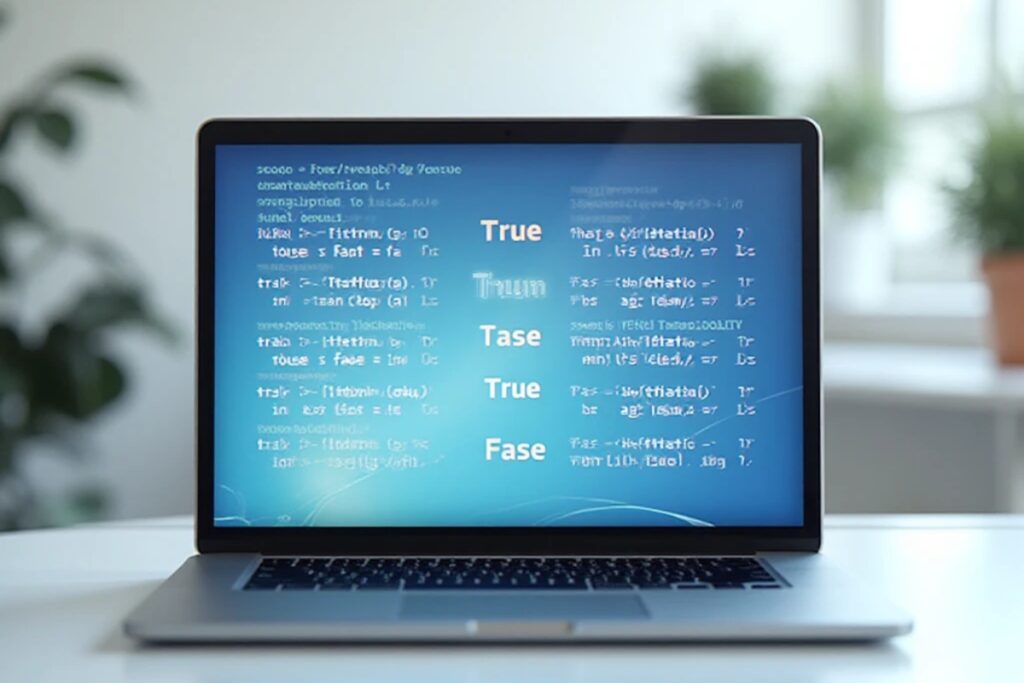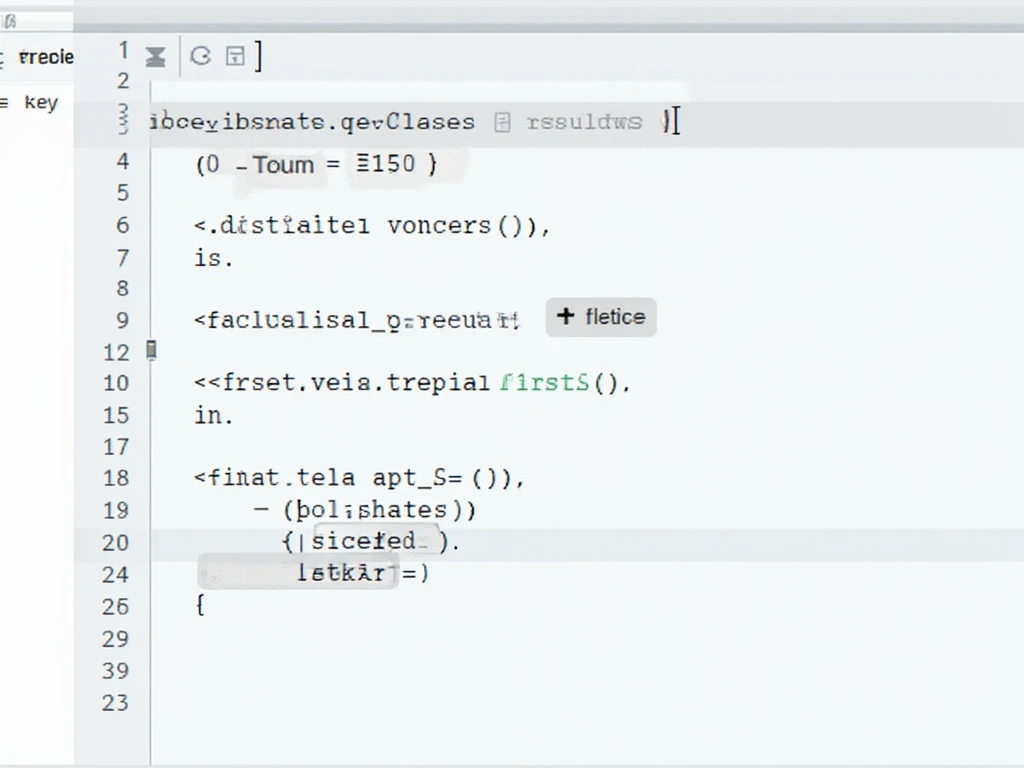In Python the double equal sign known as the equality operator is used to compare two values or variables to check if they hold the same data. This operator is one of the most common features you will use in any Python program because it helps in decision making.
When you write a condition like a == b Python evaluates whether both sides have the same value. If they are the same it returns True otherwise it returns False.Python makes learning equality very easy and its syntax is simple enough for any beginner.
Still many new programmers confuse the equality operator with the single equal sign which is used for assigning values. Knowing the difference between them helps to avoid errors and improves your understanding of logic in programming. (What Does == Mean in Python)
Let us explore what == means in Python how it works and why it is essential for writing efficient code. For more insights on startup tech and digital growth, explore the Rteetech homepage.
Understanding the Meaning of == in Python

The double equal sign checks the equality between two sides of an expression. It does not change values or assign them it only compares. The result is either True or False. For example if you write a = 5 and b = 5 then a == b will return True because both values are the same.
Python uses this operator to help you create conditional statements that control program flow. It helps to test whether values meet certain conditions before performing actions. For instance in an if statement it decides whether a block of code should run.When you use == Python first evaluates both sides then compares their values. (What Does == Mean in Python)
If both match Python returns True if not it returns False. This comparison happens for every supported data type including numbers text lists and even custom objects.You can use == to check equality in mathematical logic text comparison user inputs or program decisions. Understanding how it works is key for mastering Python basics.
Difference Between = and == in Python
Many beginners mistake the single equal sign for equality. However a single equal sign is used for assignment not comparison. When you write a = 10 you are giving the value 10 to the variable a. But when you write a == 10 you are asking Python to check whether a already holds the value 10.
Assignment means giving a value while equality means checking a value. Mixing these two operators will cause errors or unexpected results. For example using = instead of == in an if condition will raise a syntax error because Python expects a logical test not an assignment.
Understanding this difference ensures cleaner and bug free code. It also improves your ability to debug and design logical statements.
How the Equality Operator Works Internally
When Python compares two values with == it checks whether they are equal based on type and content. If you compare two numbers Python checks if their numeric values match. If you compare two strings Python checks each character in order.
If you compare two objects Python may compare their memory identity unless you have defined a custom equality method inside a class. (What Does == Mean in Python) This gives you control over how equality should be evaluated in user defined objects.For instance two lists with the same content will be equal even though they occupy different memory locations.
That is because Python checks value equality not object identity when using ==.If you compare different data types like a string and a number Python usually returns False because they are not the same kind of data even if they look similar.
Common Uses of == in Python
The equality operator plays a key role in many parts of programming. You can use it in control flow structures like if and while statements in function checks or during data validation. Some of the most common uses are shown below.
- Checking if user input matches a required value
- Comparing numbers or strings for equality
- Validating function outputs
- Filtering data from lists or dictionaries
- Matching passwords or usernames in authentication
- Comparing elements while looping through a sequence
These cases show that == is not just a symbol but a powerful tool for logical control and validation.
When == Returns True or False

The result of the equality operator is always a boolean value which can only be True or False.
If both sides have the same type and content the result is True. Otherwise it is False.
Here is a simple example.
x = 10
y = 10
print(x == y) # TrueIn this case both variables have the same value so the result is True.
If you try comparing values that look the same but are of different types you might get False.
x = 10
y = "10"
print(x == y) # FalseThis happens because one is a number and the other is a string.
Comparing Strings with == in Python
The equality operator can compare text or string values. It checks whether two strings contain the same sequence of characters.
For example
name1 = "Alice"
name2 = "Alice"
print(name1 == name2) # TrueIf you change even one letter Python will return False. String comparisons are case sensitive meaning “Alice” and “alice” are not equal.
Using == for string comparison is common in login systems text search and data processing tasks. It is a simple yet reliable way to validate text inputs.
Comparing Numbers with == in Python
You can also compare numbers easily.
a = 8
b = 5
print(a == b) # FalsePython handles integer and float comparison smoothly.
x = 5
y = 5.0
print(x == y) # TrueHere both are equal in value even though one is an integer and the other is a float. Python focuses on value equality not type unless explicitly required.
Comparing Lists and Tuples with == in Python

When you use == on sequences like lists or tuples Python compares each element in order.
list1 = [1 2 3]
list2 = [1 2 3]
print(list1 == list2) # TrueBoth lists have the same values so they are equal. If one list has different elements or order the result is False.
This type of comparison is often used in data processing and testing when you want to check whether two sequences contain the same data.
Difference Between == and is in Python
Python also has another operator called is that looks similar but performs a different check. The is operator checks whether two variables point to the same object in memory while == checks if the values inside those variables are the same.
x = [1 2 3]
y = [1 2 3]
print(x == y) # True
print(x is y) # FalseBoth lists look the same but they are stored separately in memory. Hence == returns True and is returns False.
Knowing when to use == or is avoids logical errors in object comparison.
Advantages of Using == Operator
- Helps write clean logical conditions
- Makes code easy to read and understand
- Works for all common data types in Python
- Useful for testing function outputs
- Saves time during debugging
- Plays a key role in loops and conditionals
- Ensures reliable data comparisons
- Works seamlessly with booleans and numbers
Common Mistakes to Avoid When Using ==
- Using = instead of == in conditions
- Comparing different types without conversion
- Forgetting that string comparison is case sensitive
- Expecting equality between different data types
- Misunderstanding the difference between == and is
- Using == to compare floating point values with high precision
- Forgetting to define eq in custom classes when needed
- Assuming identity comparison and equality are the same
Custom Equality in Python Classes
Python allows developers to define custom equality by overriding the eq method. This method tells Python how to check equality for user defined objects.
class Person:
def __init__(self name age):
self.name = name
self.age = age
def __eq__(self other):
if isinstance(other Person):
return self.name == other.name and self.age == other.age
return False
p1 = Person("John" 25)
p2 = Person("John" 25)
print(p1 == p2) # TrueEven though both objects have different memory locations they are considered equal because the equality method checks their attributes.
Practical Uses of == in Real Projects

The equality operator is essential in real programming tasks. It helps check login credentials validate form data or test whether functions return expected outputs.
For example in a banking app you can compare entered PIN numbers to stored PINs before allowing transactions. In web development it can help verify user choices or responses.
In machine learning data analysis and automation == is widely used to compare dataset entries or filter results. Knowing how to use it effectively helps create robust and error free code.
Conclusion
Understanding what == means in Python is one of the first steps toward mastering the language. It is simple yet powerful and helps you build logic that drives decision making in programs.
The equality operator lets you compare numbers text lists and objects safely. It returns True when values are the same and False otherwise. It also works perfectly inside loops and conditions making your programs dynamic and responsive.
Always remember that = is for assignment while == is for equality. Use them correctly to avoid syntax errors and make your Python code more reliable. The more you practice the better you will understand the real power of this operator. learn more about our SEO for business growth strategies instead of just “Rteetech LCC”.
FAQs
What does == mean in Python
It means equality checking between two values or variables to see if they hold the same data.
What is the difference between = and == What Does == Mean in Python
A single equal sign assigns a value while a double equal sign compares values.
Can I use == to compare strings in Python
Yes it checks whether two strings have identical characters and order.
Does == compare objects or memory locations
It compares values not memory addresses unlike the is operator.
What happens if I compare different data types using ==
Python usually returns False unless the values are convertible and equal.
Is == case sensitive for string comparison
Yes Python treats uppercase and lowercase letters as different values.
Can I use == in a custom Python class
Yes you can override the eq method to define how equality works for objects.
Why is understanding == important for beginners
It builds a strong foundation for logic control flow and decision making in Python programming.



